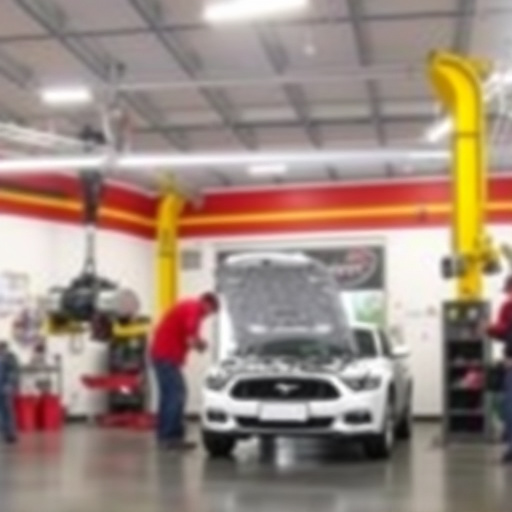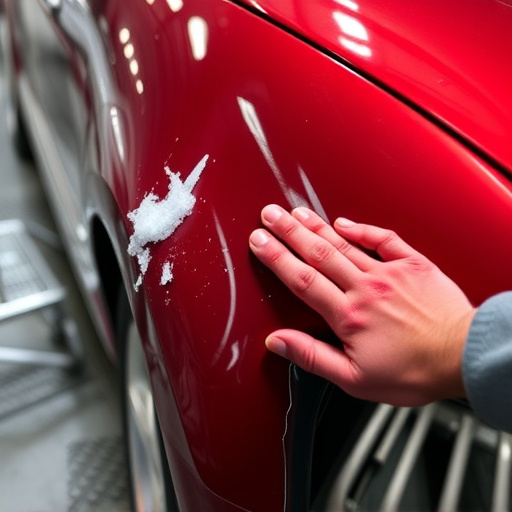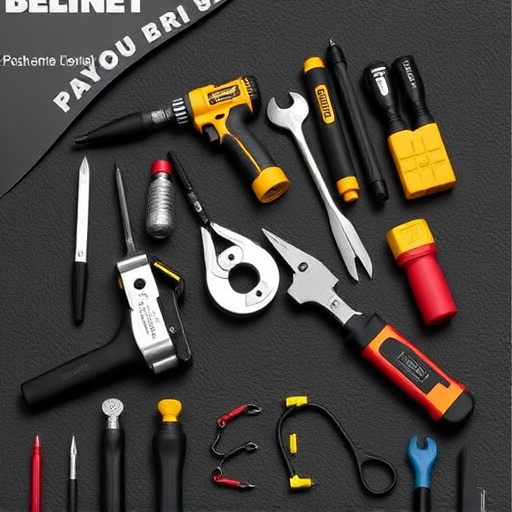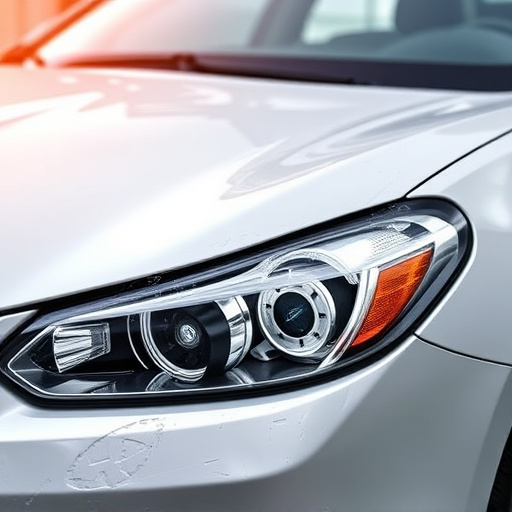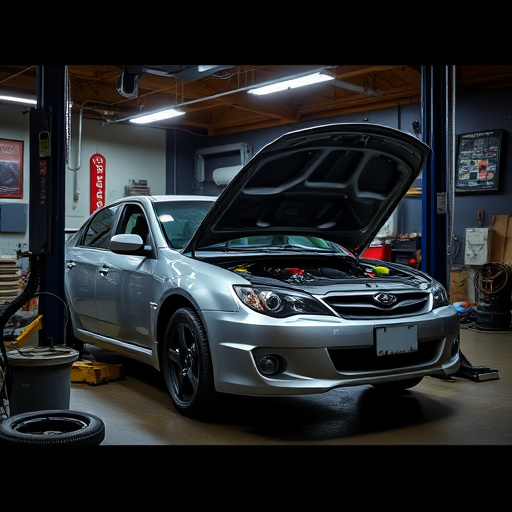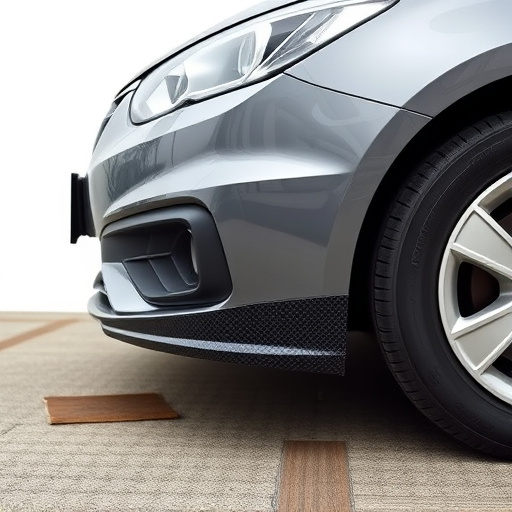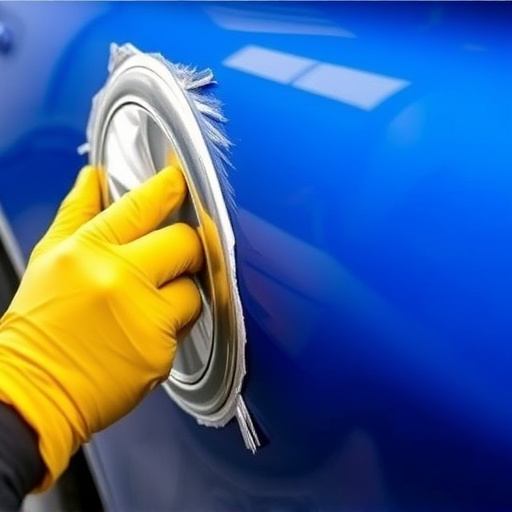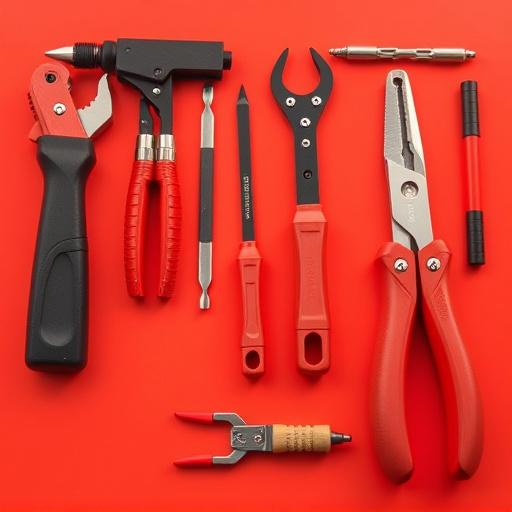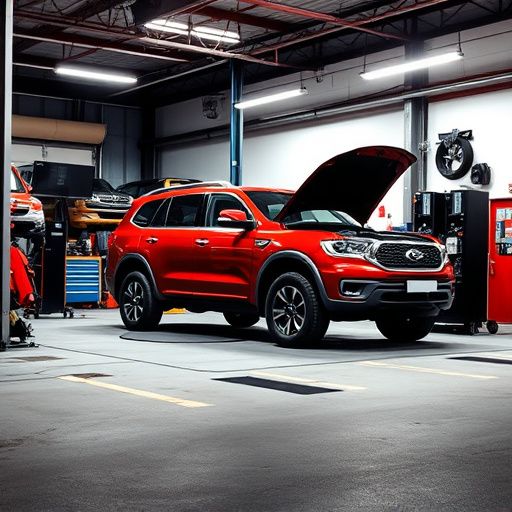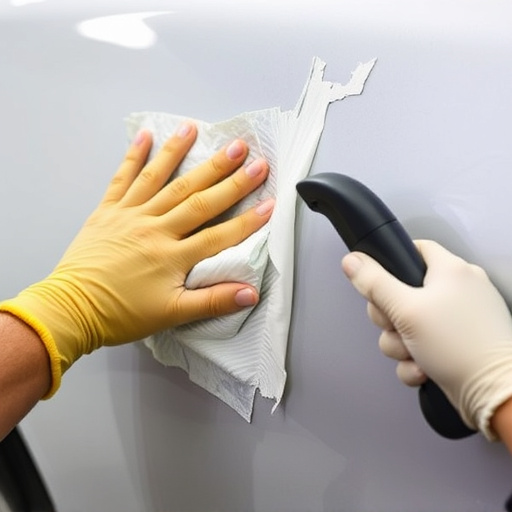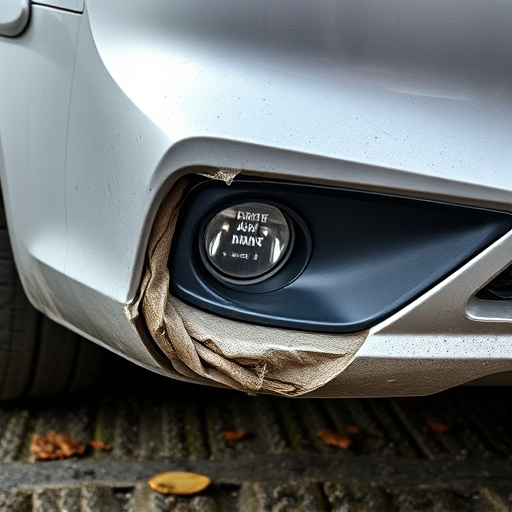Tesla-approved adhesives are crucial for preventing corrosion between dissimilar metals in automotive applications like aluminum and steel, safeguarding vehicle bodywork's structural integrity and aesthetic appeal during collision repair or hail damage restoration. These specialized adhesives meet stringent performance criteria, enhancing safety, longevity, and aesthetics while withstanding daily driving challenges. They're essential for high-performance vehicles, serving as a game-changer in automotive restoration.
“In the realm of automotive innovation, Tesla has set a new standard with its advanced materials science. This article explores an often overlooked yet critical aspect: Tesla-approved adhesives that prevent corrosion between dissimilar metals. Corrosion, a common foe in metal structures, can be mitigated through these specialized adhesives. We’ll delve into understanding the root causes of corrosion between different metals, Tesla’s stringent criteria for adhesive selection, and the diverse applications and benefits these approved adhesives bring to modern vehicles.”
- Understanding Corrosion Between Dissimilar Metals
- Tesla's Adhesive Criteria for Preventing Corrosion
- Applications and Benefits of Tesla-Approved Adhesives
Understanding Corrosion Between Dissimilar Metals

Corrosion between dissimilar metals is a common issue that can arise when different types of metal come into contact with each other, especially in automotive applications. This occurs because metals have varying levels of reactivity with moisture and oxygen, leading to chemical reactions that result in corrosion. In the context of vehicle bodywork, it’s particularly problematic as it can cause weak spots, structural damage, and even failure over time. For instance, consider a scenario where aluminum components meet steel parts; the difference in their chemical properties might lead to galvanic corrosion, resulting in unsightly stains, rust formation, and eventual degradation of the Mercedes-Benz collision repair or hail damage repair processes.
Tesla-approved adhesives play a pivotal role in mitigating this issue by creating a protective barrier between the metals. These specialized adhesives are designed to bond dissimilar metals effectively while preventing the passage of moisture and oxygen, thereby stopping corrosion in its tracks. This is crucial for maintaining the structural integrity and aesthetic appeal of vehicle bodywork, ensuring that cars undergoing collision repair or suffering from hail damage remain robust and visually appealing over their lifespan.
Tesla's Adhesive Criteria for Preventing Corrosion

Tesla has set stringent criteria for adhesives used in their vehicles, with a primary focus on preventing corrosion between dissimilar metals. This is crucial, given Tesla’s innovative use of diverse metal types in their car bodies and components to reduce weight and increase efficiency. When it comes to auto body repairs or vehicle collision repair, using Tesla-approved adhesives becomes essential. These specialized adhesives meet stringent performance standards, ensuring long-lasting bonds that withstand the rigors of daily driving and protect against corrosion for years to come, just like a collision center would use them for top-quality repairs.
Applications and Benefits of Tesla-Approved Adhesives

Tesla-approved adhesives play a pivotal role in various applications, offering unparalleled protection against corrosion for dissimilar metals. Their primary use lies in the automotive industry, particularly in high-performance vehicles like Tesla models, where precise connections between different metal components are essential. These adhesives ensure that car body restoration and repair processes remain effective and long-lasting.
The benefits of using Tesla-approved adhesives extend beyond mere corrosion prevention. They enhance the structural integrity of cars, making them suitable for demanding conditions. In a car repair shop or during automotive restoration projects, these specialized adhesives contribute to improved aesthetics, enhanced safety, and increased vehicle longevity. By bridging the gap between dissimilar metals, they create seamless bonds that withstand extreme temperatures, vibrations, and environmental stressors—a true game-changer in the field of automotive restoration.
Tesla-approved adhesives play a pivotal role in preventing corrosion between dissimilar metals, addressing a significant challenge in automotive manufacturing. By adhering to stringent criteria, these advanced adhesives offer long-lasting protection, enhancing the durability and longevity of vehicle structures. Their applications span various components, from body panels to complex electrical systems, showcasing their versatility and effectiveness. Embracing Tesla-approved adhesives is not just a step towards corrosion prevention; it’s a testament to innovative materials science and engineering, ensuring that modern vehicles can withstand the rigors of diverse environments while preserving their structural integrity.

